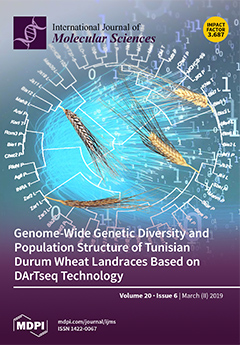Metabolic inhibition is a common condition observed during ischemic heart disease and heart failure. It is usually accompanied by a reduction in L-type Ca
2+ channel (LTCC) activity. In this study, however, we show that metabolic inhibition results in a biphasic effect on
[...] Read more.
Metabolic inhibition is a common condition observed during ischemic heart disease and heart failure. It is usually accompanied by a reduction in L-type Ca
2+ channel (LTCC) activity. In this study, however, we show that metabolic inhibition results in a biphasic effect on LTCC current (I
CaL) in human and rat cardiac myocytes: an initial increase of I
CaL is observed in the early phase of metabolic inhibition which is followed by the more classical and strong inhibition. We studied the mechanism of the initial increase of I
CaL in cardiac myocytes during β-adrenergic stimulation by isoprenaline, a non-selective agonist of β-adrenergic receptors. The whole-cell patch–clamp technique was used to record the I
CaL in single cardiac myocytes. The initial increase of I
CaL was induced by a wide range of metabolic inhibitors (FCCP, 2,4-DNP, rotenone, antimycin A). In rat cardiomyocytes, the initial increase of I
CaL was eliminated when the cells were pre-treated with thapsigargin leading to the depletion of Ca
2+ from the sarcoplasmic reticulum (SR). Similar results were obtained when Ca
2+ release from the SR was blocked with ryanodine. These data suggest that the increase of I
CaL in the early phase of metabolic inhibition is due to a reduced calcium dependent inactivation (CDI) of LTCCs. This was further confirmed in human atrial myocytes where FCCP failed to induce the initial stimulation of I
CaL when Ca
2+ was replaced by Ba
2+, eliminating CDI of LTCCs. We conclude that the initial increase in I
CaL observed during the metabolic inhibition in human and rat cardiomyocytes is a consequence of an acute reduction of Ca
2+ release from SR resulting in reduced CDI of LTCCs.
Full article






